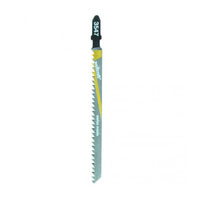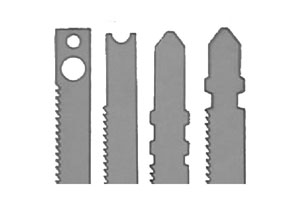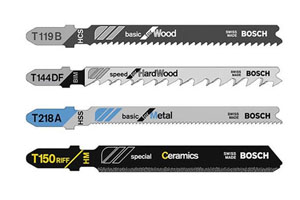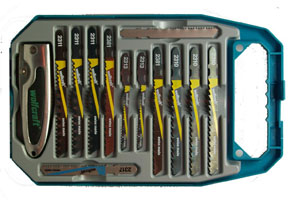 For people who have a jigsaw in their home tool kit, it becomes necessary to select a consumable tool, in particular files. For those who do not know anything about this, we will inform you that for different types of materials that can be cut with an electric jigsaw, files of different sizes, thicknesses, tooth sizes, etc. are required.
For people who have a jigsaw in their home tool kit, it becomes necessary to select a consumable tool, in particular files. For those who do not know anything about this, we will inform you that for different types of materials that can be cut with an electric jigsaw, files of different sizes, thicknesses, tooth sizes, etc. are required.
Part of the information about what material can be cut with a particular file can tell its appearance, at the same time, all information can only be obtained by examining the file in detail and reading the markings applied to the file, which can also tell a lot about its purpose.
So, if you know how to read and decipher the markings on the file, then you can buy exactly the one you need without error.
On any file, you can first find the name of the brand - the manufacturer's company.
The name does not carry any useful information, although it is already possible to judge the quality.
Further on it you can find the marking of the steel from which the canvas is made. Steel marking is indicated by two or three letters. There are four designations possible:
- HCS - indicates that the file is made of high carbon steel. Basically, saw blades for soft materials such as wood and plastic are made from such steel.
- BiM - indicates that the file has a bimetallic base. These products are very strong and flexible, due to which they are a universal tool that can be used for sawing both soft and hard materials.
- HSS - if you find this marking on the blade, then it is made of tool high-speed steel. Such products are best suited for cutting metal. By the way, most metal drills are also made from this type of steel.
- HM / TC - the last type of marking, denoting carbide saw blades. Such files are intended for specific work on sawing very hard materials. They are commonly used for sawing strong steel, roof tiles, various types of fiberglass and even abrasive materials.
 Also on most files there is a series of letters and numbers. The marking uses Latin letters, as well as Arabic numerals. First comes the letter indicating the type of shank . These are the letters T, X or U. The letter T indicates a T-shaped shank. Currently, this has lost its relevance, since all modern canvases are produced with a universal shank.
Also on most files there is a series of letters and numbers. The marking uses Latin letters, as well as Arabic numerals. First comes the letter indicating the type of shank . These are the letters T, X or U. The letter T indicates a T-shaped shank. Currently, this has lost its relevance, since all modern canvases are produced with a universal shank.
After the designation of the shank there are numbers, usually three pieces.
The very first number is important to us, which indicates the length of the saw blade. 1 - file 75 mm long (short file)
2 - file 90 mm long (medium length file)
3 - file 150 mm long (elongated blade)
7 - file more than 150 mm long (very long file)
Then again comes the letter designation, which encrypts the size of the saw tooth . The size of the tooth is indicated by the Latin letters A, B, C, and D. The letter "A" indicates the smallest size of the tooth, respectively, "D" - the largest size.
 And at the very end of the alphanumeric series, you can find one or two more letters. The latter is important to us, as it indicates the special qualities of the jigsaw saw blade.
And at the very end of the alphanumeric series, you can find one or two more letters. The latter is important to us, as it indicates the special qualities of the jigsaw saw blade.
F - bimetal. These fabrics are very durable and high quality.
R - indicates that the blade has a reverse tooth. Such files are very rarely used, and mainly for sawing thin, stratified materials.
X is the designation of the universal canvas. This file is suitable for both hard metal and softer ones: plastic or wood. From experience it is worth noting that for cutting metal it is better to select the appropriate blade.
O - file for a curved cut. In appearance, these blades differ in that they are already almost 2 times, due to which it is convenient to saw through curved cuts without bevel with its help.
P - thickened canvas. This file is used in cases where a strictly perpendicular cut is required, for example, when sawing a thick board. Due to the greater thickness and rigidity, the blade does not bend when cut and the cut is not beveled.

|
Useful articles |